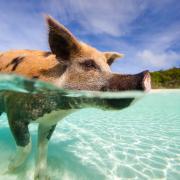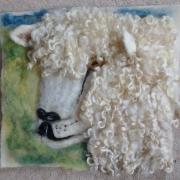Animal magic with the media vet and chef to pets
With an early-summer heatwave making our dog Pip particularly hot and bothered – and very keen to jump into the local river – I’ve been thinking a lot about the growing climate crisis we’re facing, the impact this is going to have on our pets, and the positive steps we can take to reduce the impact they are undoubtedly having on the world’s climate.
As the world warms, and extreme weather events become ever more common, our pets are going to have to deal with the same climate-related challenges that will affect our lives, from heatwaves to floods. And it’s the affect of extreme hot weather that’s the most obvious danger, particularly to our dogs. Unlike we humans who have a highly effective heat-management system based on evaporating sweat from all across our bodies, dogs and cats are much less able to cope with extreme heat thanks to their thick fur coats which mean that they can only sweat through tiny areas of their skin such as the pads on their feet.

The main way dogs and cats lose heat is through panting, which evaporates moisture from their tongues, nasal passages, and lungs, but this is much less effective than all over body sweating, so hot weather can quickly lead to heat stress and heat stroke in our pets. As the world warms, and extreme heat waves become more common, the danger of life-threatening heat stroke for pets increases and sadly there will undoubtedly be many canine and feline casualties directly linked to global heating in the future.
Thankfully, there are steps we can all take to protect our pets from the heat, such as always providing shade, cool water, and fresh air, avoiding walks in the hottest parts of the day, play in and around water (where safe to do so), and even using cooling matts or jackets in seriously hot conditions. One thing just to note here is that it might sound counter-intuitive but it’s not a good idea to shave the coat of very hairy dogs in the hot weather. This is because their thick coats actually help to keep them cool by providing insulation from the hot environment and removing them can actually increase the risk of heat stroke.

READ MORE: Did you know that dogs have 300 million olfactory receptors in their noses?
These measures are all very well, but it would obviously be far better if we could prevent these extreme heat events from happening in the first place – and to do this, we need to do all we can to reduce the world’s greenhouse gas emissions, including those from our pets. It’s been estimated that owning a dog is equivalent to running a large 4x4 car in terms of CO2 emissions, and most of that comes from the food we feed. In the US, 25% of all calories derived from animals are used to feed pets, so this is a major problem and one the pet food industry is finally starting to take seriously. Driven by a new breed of eco-conscious pet entrepreneurs, lots of new and exciting green pet food brands have been launching, using alternative low-carbon proteins such as insects, fungi, and vegetables. Whilst these brands aren’t yet mainstream, and the vast majority of dogs and cats are still fed on an unsustainably high meat diet, change is coming, and I strongly believe – and hope – that within a few years, most pets will be happily devouring mainly meatless meals.
Follow Joe on Twitter: @joethevet



























